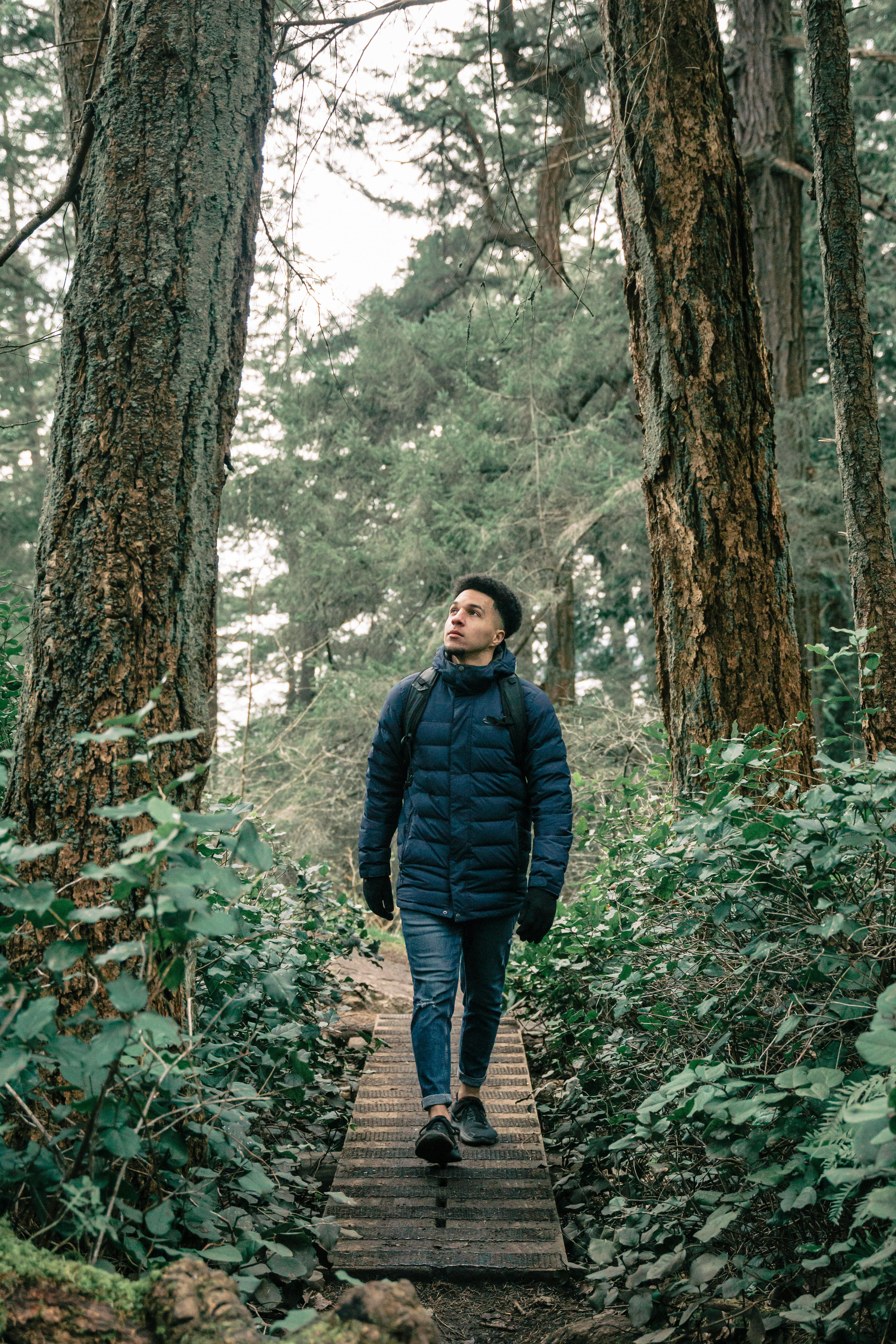
By C Faye Alexander
I recently had a bad day—I woke up irritable and discontent, and I was anxious for some reason. The feeling was this vague worry that something terrible was going to happen, or that I was going to get in trouble for something (I’m working through all of this stuff in therapy).
I couldn’t focus on the work I needed to do. I had 500 thoughts cycling through the maze in my mind, and I wasn’t able to grab onto even just one of them. I needed a break, but I kept putting it off because I knew I’d feel guilty for taking one.
Then…I heard that quiet voice in my mind—my voice—gently telling me: Take a walk. It wasn’t loud, but it was firm. It was like being reminded to take my medication. I think someone once said that to me—walking is medicine—and maybe that’s why it stuck. Either way, I knew it was right. So I walked away from the laptop, put on my walking shoes, and left the house. I didn’t even grab my earbuds.
Have you ever had a day like that?
Have you ever wished you could pause time, crawl back into bed, pull the covers over your head, and wake up to a brand new start?
I didn’t get a new day, but I did get something close.
I got the forest.
How Nature Becomes the Reset Button
Everything I’m sharing here comes from loads of research I’ve done out of personal curiosity and a deep need to understand how natural environments support my overall sense of balance and emotional well-being. When I discovered that walking in nature could actually calm my nervous system—not just metaphorically, but biologically—it changed everything. Since it’s given me real relief from mental stress, I want to share what I’ve learned with others who might need it too.
First things first—nature helps you chill the hell out.
Literally. Just being outside in a natural environment can lower your cortisol (that’s your stress hormone), slow your heart rate, and help your nervous system shift out of fight-or-flight mode. It’s not in your head—it’s in your body.
Your brain doesn’t have to work so hard out here.
There’s something called “soft fascination.” It’s when your surroundings gently pull your attention without demanding it. Think: trees swaying, water trickling, waves lapping, birds doing their thing. This gives your brain a break from overthinking and decision fatigue.
According to Attention Restoration Theory (also known as ART, which is pretty cool), first developed by Rachel and Stephen Kaplan in the late ’80s, environments with soft fascination let your directed attention (the kind you use to tackle tasks) take a breather while involuntary attention takes over. Studies repeatedly show that even brief exposure to natural elements—such as walking in a park—helps restore cognitive focus more effectively than urban scenes. You can read more about ART here.
Your body responds to the trees in ways you can’t even see.
 Trees release these tiny things called phytoncides (fancy word for natural oils). When you breathe them in, your immune system actually gets a boost. It’s like nature’s version of aromatherapy—only it also helps you fight off illness.
Trees release these tiny things called phytoncides (fancy word for natural oils). When you breathe them in, your immune system actually gets a boost. It’s like nature’s version of aromatherapy—only it also helps you fight off illness.
I’m currently reading this beautiful little book called Japonisme by Erin Niimi Longhurst, and just a couple of days ago, I landed on a section about Shinrin-Yoku—also known as “forest bathing” (which I’ll be getting to in a moment). Erin writes that during a walk in the woods, you actually inhale these phytoncides, and they help increase and stimulate the activity of white blood cells called natural killer cells. These are the ones that help fight off infection and keep your immune system strong.
I also read that the smell of cedar, in particular, can have some pretty amazing effects on your nervous system.
It’s a great book. I’ll include a link at the bottom if you want to check it out for yourself.
Nature doesn’t just calm you down—it lifts you up.
Walking in the woods (or the park, or by the ocean) can increase serotonin and dopamine—those feel-good chemicals your brain loves. You don’t even have to do anything intense. Just being there is enough to shift your mood.

Even your mind starts to declutter
Remember that part I shared earlier—about my mind feeling like a maze, 500 thoughts cycling through and not being able to grab even one? Nature helps with that. Not just emotionally, but neurologically. When I finally stepped outside and started walking, it felt like something inside me unclenched. My breath slowed. My thoughts didn’t disappear, but they softened—like background music that was once blaring and finally got turned down low. It felt like my body had been waiting for this exact moment to exhale.
I did some more research, and in one study, people who took a 90‑minute walk in nature showed a decrease in activity in the subgenual prefrontal cortex—that’s the part of the brain tied to rumination, worry, and that constant overthinking spiral. The group who walked through the city reported no real change—their mental maze just kept looping. You can read more about this study here.
Other research shows that even a one-hour walk in a green space can lower activity in the amygdala, the part of the brain responsible for processing fear and stress (I’ve been super into brain stuff). Which means: fewer alarms going off inside you. Your body and brain actually begin to feel safe, which, for me, is a massive win. And if you’re like me and want to dive a little deeper into the whole “green space<” equals brain reset thing, I’ve included two links at the bottom that go more in depth on the studies behind it. It’s super fascinating stuff.
It’s wild how something as simple as walking outside can be that powerful, but once I understood the science behind it, everything clicked. It helped me make sense of the calm that came over me—the way my shoulders dropped, my thoughts quieted, and my body finally let go of the tension it had been carrying. It didn’t erase what I was dealing with, but it gave me a moment to breathe, to feel steady, to regroup. And it’s become one of the most important tools in my mental health toolkit.
A Quick Note on Forest Bathing
There’s actually a whole thing around this now, and it’s become quite a trend on social media. It’s called Shinrin-Yoku—or “forest bathing.” It started in Japan in the 1980s as a public health practice, and it’s exactly what it sounds like: bathing yourself in the atmosphere of the forest. Not with water, or leaves (unless you want to try that), but with presence.
 You’re not hiking or exercising. You’re just being. Walking slowly. Noticing what you hear, what you smell, and how the air feels. Letting the forest hold your attention so your mind can quiet down.
You’re not hiking or exercising. You’re just being. Walking slowly. Noticing what you hear, what you smell, and how the air feels. Letting the forest hold your attention so your mind can quiet down.
Studies show that forest bathing lowers cortisol, boosts immune function (thanks to those phytoncides I mentioned earlier), and reduces anxiety and depression. It’s been so effective that Japanese doctors have actually prescribed it as preventive medicine.
After trying it for myself, without even knowing that’s what I was doing, I get why it’s a thing.
Final Thoughts
I started walking in nature because I was desperate for peace. My old ways of trying to find relief were no longer an option. At first, the walks felt uneasy—like I didn’t know how to be without a screen in my hand or a task in front of me. But over time, I began to feel something shift. My body softened. My mind stopped sprinting. I felt held by something bigger than me—quiet, steady, and alive. And once I started learning why eco-therapy works—what it does to the body, the brain, and the nervous system—it made me feel even more connected to the practice. I became more willing to protect the time it takes, and less guilty for needing it.
Nature doesn’t fix everything. But it gives you a place to start over. A place where your mind can quiet down, your body can loosen its grip, and you can remember that you’re human, not a machine.
So if today feels loud or heavy, try it. Walk. No earbuds. No agenda. Just you, the earth, and the breath you forgot you were holding.
Curious to learn more about how green spaces impact your brain?
I dropped two links below if you want to nerd out a little like I did.
A lot of what inspired me to write a blog on this topic came from a beautiful little book called Japonisme by Erin Niimi Longhurst. It’s full of gentle wisdom from Japanese culture, including a whole section on Shinrin-Yoku (forest bathing). I’ll link it below if you want to check it out. It’s definitely one of those books you’ll want to come back to.

No comments yet.